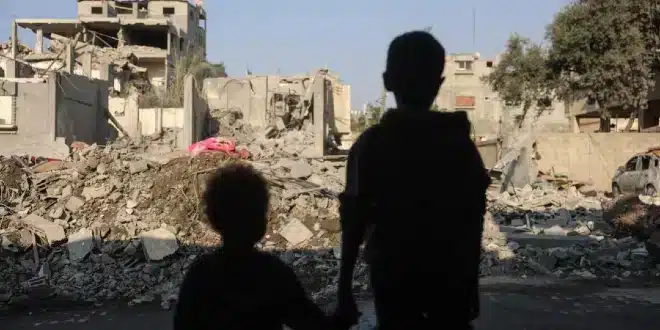Several United Nations agencies have again issued urgent warnings about the worsening humanitarian crisis in much of Gaza, emphasizing the civilian toll after more than a year of Israeli military actions.
In a recent report assessing the fatalities over the first six months of the conflict, the UN Human Rights Office (OHCHR) noted that nearly 70% of those killed were children and women, which they interpret as a “systematic violation of fundamental principles of international humanitarian law” by the Israeli military.
The report highlights that ongoing attacks reflect “apparent indifference” to civilian casualties and the impact of the methods used in these strikes. The findings show that 80% of verified deaths occurred in residential buildings, with 44% of those killed being children and 26% women. OHCHR identified a recurring pattern of entire families, including babies, older people, and young children, losing their lives in residential settings.
UN High Commissioner for Human Rights, Volker Türk, stated that these civilian casualties were directly linked to failures in upholding essential principles of international humanitarian law, including distinction, proportionality, and precaution in attacks. He stressed that this pattern of harm to civilians remains “unabated” over a year into the conflict.
The UN children’s agency, UNICEF, reported that in October alone, at least 64 attacks targeted schools in Gaza, killing an estimated 128 people, many of whom were children. Nearly half of these incidents occurred in northern Gaza, an area facing intense bombardment, mass displacement, and inadequate aid.
According to UNICEF, over 95% of Gaza’s schools have been partially or fully destroyed since the conflict began. Israel has previously claimed that Hamas utilizes schools and other civilian areas for its operations.
Additionally, the World Health Organization (WHO) has reported an impending risk of famine in parts of northern Gaza, where recent Israeli operations are concentrated. Their findings show a rapid rise in hunger, malnutrition, and mortality due to lack of food and disease, warning that famine thresholds may already be reached or close to being met.
According to WHO data, aid shipments into Gaza have dropped significantly, with an average of just 58 trucks entering daily in late October—down from around 500 trucks daily before the conflict began. Food prices have also skyrocketed by 312% since the start of the conflict.
WHO Director-General Tedros Adhanom Ghebreyesus expressed deep concern, calling for immediate and secure access to increase humanitarian aid, particularly food and medicine for severe malnutrition, emphasizing the need for assistance “within days, not weeks.”
In response, the Israeli agency overseeing aid transfers to Gaza, COGAT, dismissed the famine warnings, claiming past reports have often relied on sources with vested interests or limited accuracy. COGAT also stated that Israel’s military has repeatedly urged northern Gaza residents to move to safer zones, noting a significant humanitarian effort underway in central and southern Gaza. The agency reported that over the past two months, more than 39,000 trucks carrying over 840,000 tons of food have been allowed into Gaza.


